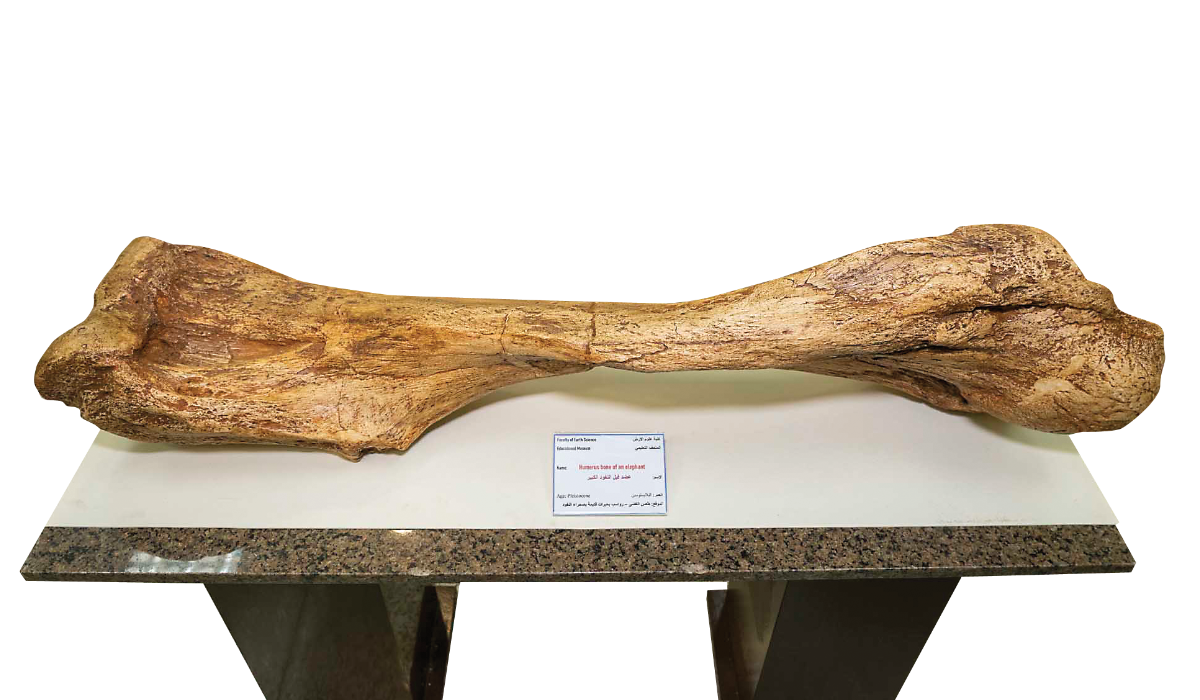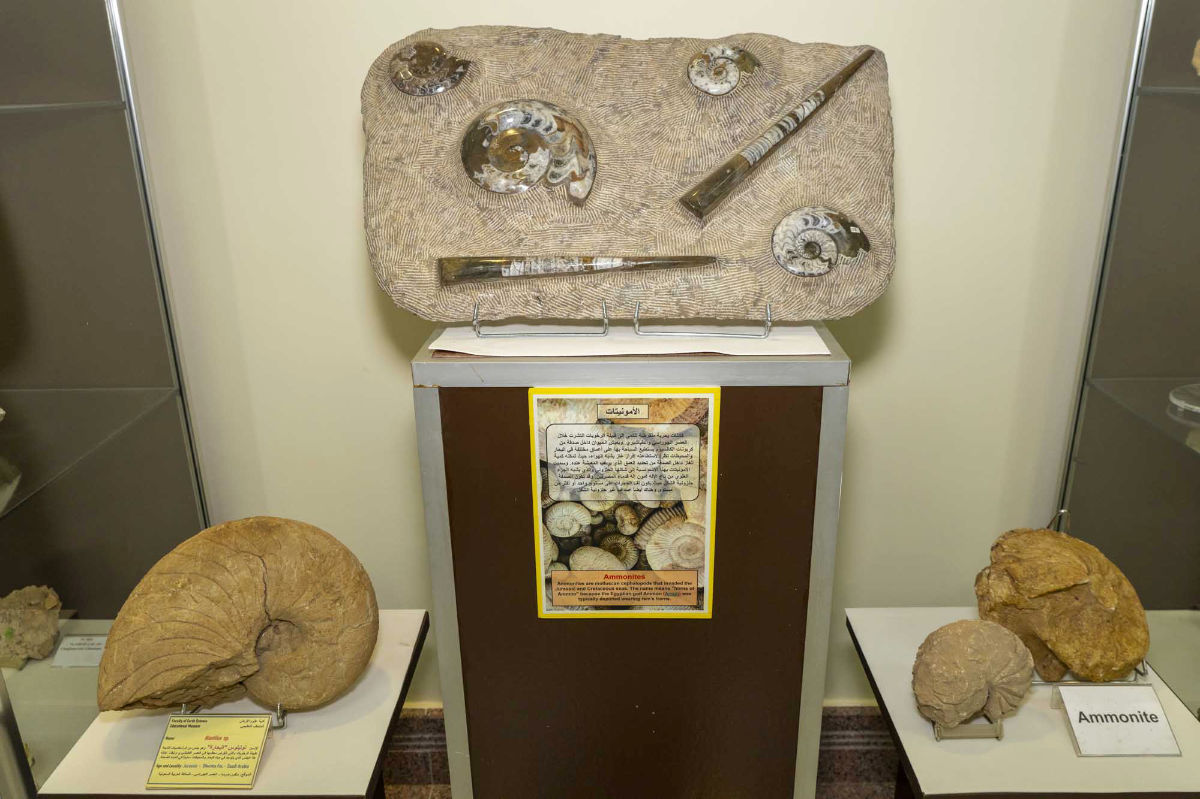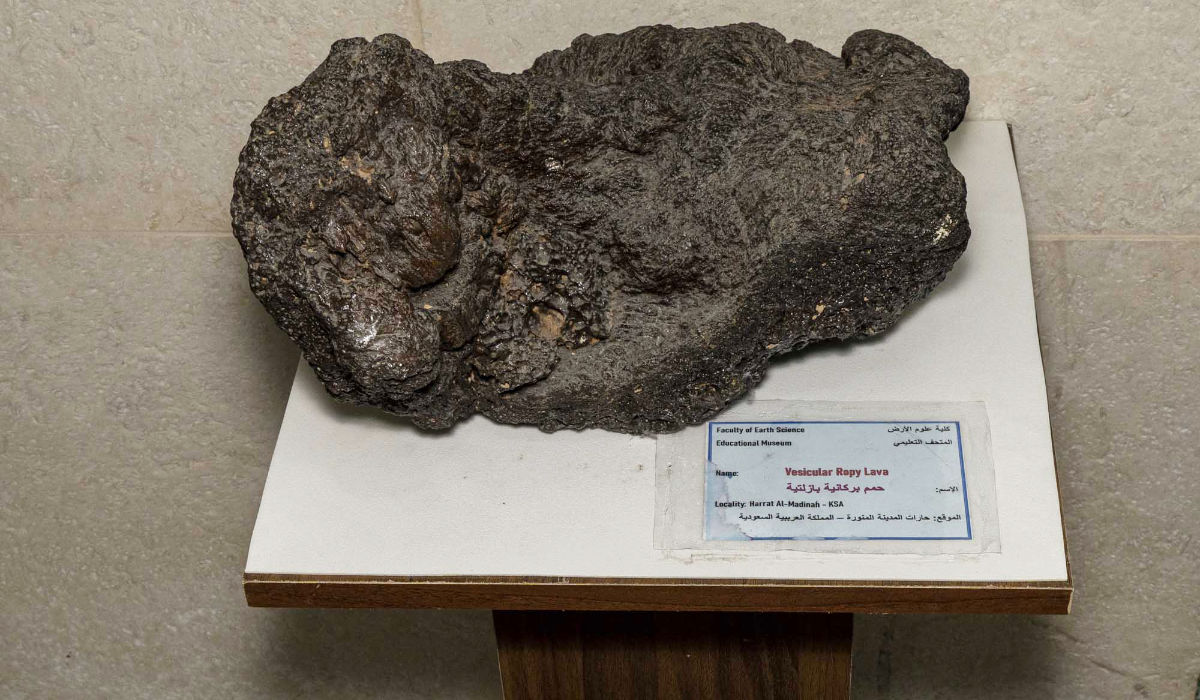RIYADH: The Geological Education Museum at King Abdulaziz University is a treasure trove of minerals, meteorites, and rocks from around Saudi Arabia and abroad.
The museum, which opened in 1977, holds thousands of rare mineral artifacts, rocks, maps, aerial and field photographs, and various scientific tapes. It is home to precious resources for students and researchers.
Rushdi Taj, general supervisor of the museum, told Arab News: “It is an educational museum that contains many types of earth-forming rocks, which of course include sedimentary and metamorphic igneous rocks.

The museum is an enduring record of the Kingdom’s discoveries of minerals, rocks, ores, and oil fields over time. (Supplied)
“We also have rock samples from the Jabal Al-Malsa volcano, which erupted in the city of Madinah in the year 1256 and was located in a mountain southeast of the city.”
Jabal Al-Malsa was the last volcano to erupt in what is now Saudi Arabia. The event lasted several days with lava flows traveling 23 km, the longest of which came to rest just over 8.2 km from the Prophet’s Mosque.
The volcano created a lava field called Harrat Rahat, today a prominent tourist area, along with the nearby Al-Wahbah Crater.
FASTFACT
The last volcano to erupt in what is now Saudi Arabia was the Jabal Al-Malsa in the Madinah region in 1256.
As well as this, Saudi Arabia is home to a vast area of Cenozoic volcanic rocks, stretching approximately 90,000 sq. km, making it one of the most important and largest areas of alkali olivine basalt in the world.

The museum is an enduring record of the Kingdom’s discoveries of minerals, rocks, ores, and oil fields over time. (Supplied)
Speaking on the other samples in the museum, Taj said: “In addition to the numerous mineral ores and sources that come from Saudi mines and quarries, along with a variety of minerals, we also have the meteorite that fell in the Empty Quarter in 1863, southeast of Riyadh.”
Among the museum’s other attractions is a synthetic dinosaur skull made using a template. It represents the skull of a Tyrannosaurus that would have lived in the Cretaceous era around 66 million years ago.
Bader Hakami, dean of the College of Earth Sciences, noted that the museum is attached to a room of teaching aids and video projectors, which display scientific and educational films.

The museum is an enduring record of the Kingdom’s discoveries of minerals, rocks, ores, and oil fields over time. (Supplied)
He explained that the museum has evolved into an enduring record of the advancement of science and the Kingdom’s discoveries of minerals, rocks, ores, and oil fields over time.
Taj added that the museum is crucial for the next generation since it will educate them on the Saudi Arabia’s geology and its primary mineral and oil resources, which are used to produce building materials.
Visiting hours are from 8:30 a.m. to 11 p.m.



































